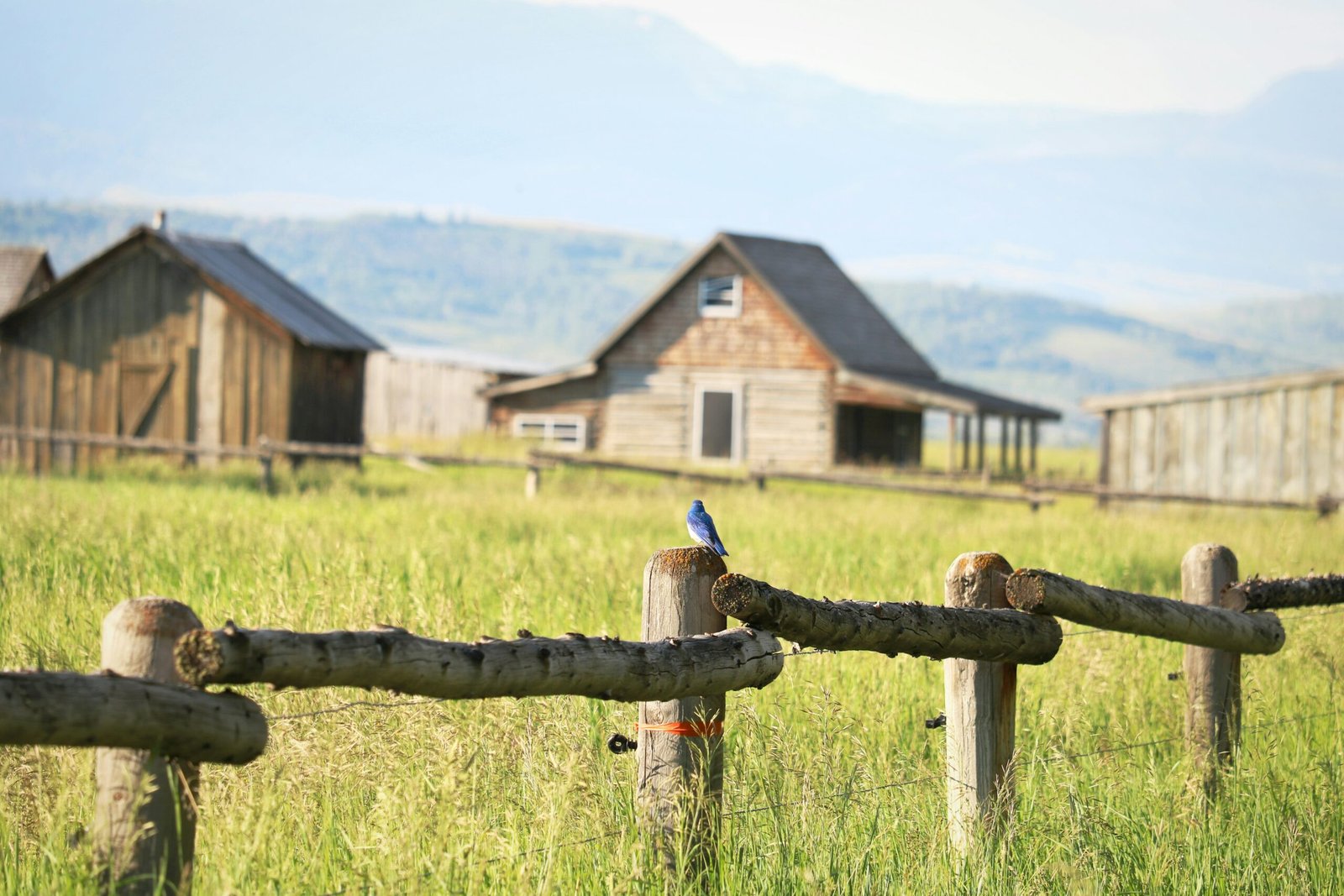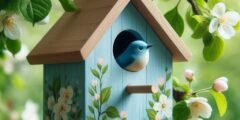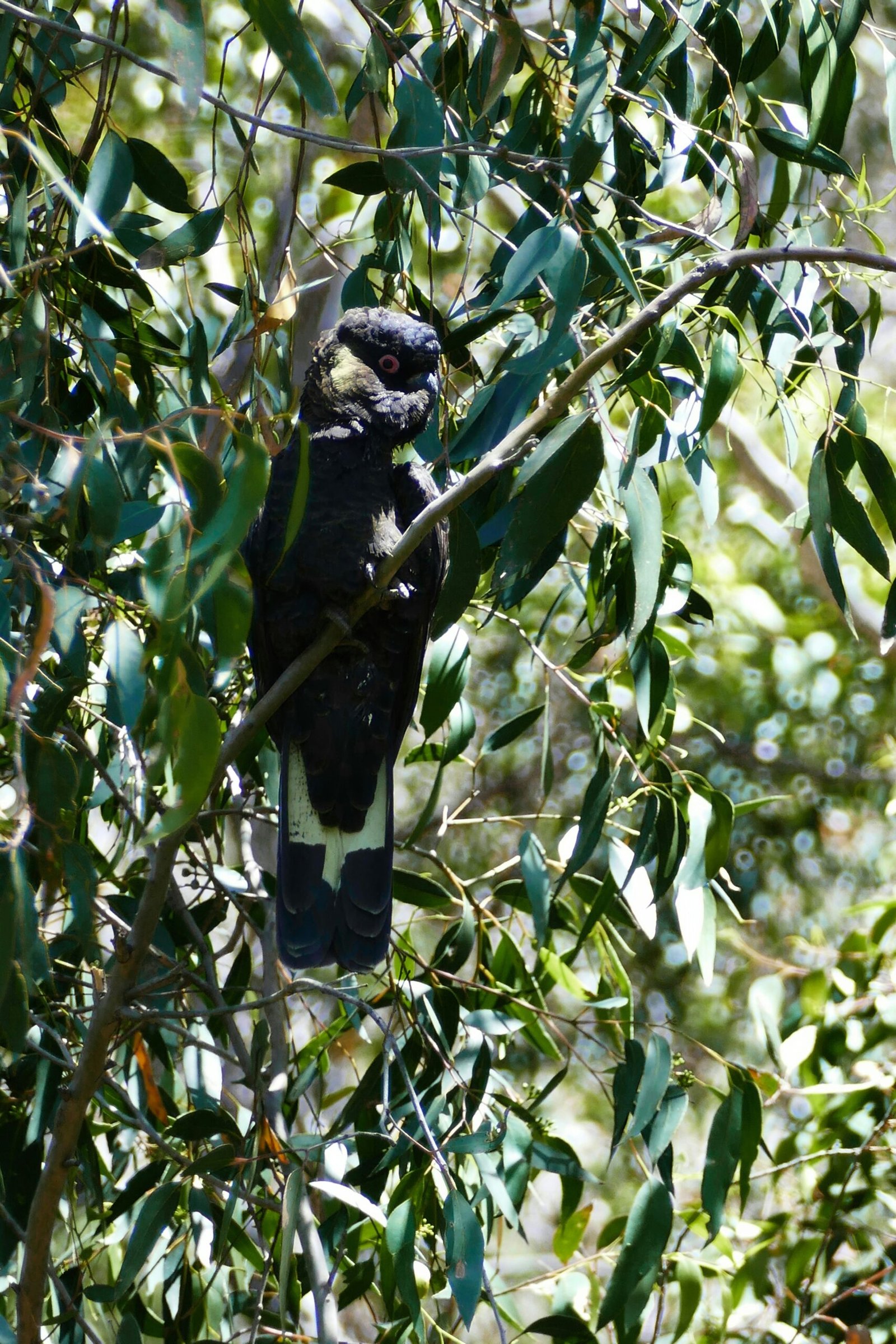Introduction
Bluebird houses, or nest boxes, play a crucial role in providing a safe and supportive environment for these charming songbirds. One essential aspect often debated among birdhouse enthusiasts is whether a bluebird house should have ventilation holes. This blog post aims to delve into this topic, examining the significance of ventilation in bluebird houses and addressing the central question: should a bluebird house have ventilation holes?
The discussion will explore various facets of this question, presenting the benefits and potential drawbacks of incorporating ventilation holes into the design of bluebird houses. Additionally, practical advice will be offered to assist birdhouse builders and enthusiasts in making informed decisions. By the end of this post, readers will gain a comprehensive understanding of how ventilation influences the well-being of bluebirds and how to optimize the design of their houses to foster a healthy environment for these birds.
Why Are Ventilation Holes Important in a Bluebird House?
Ventilation holes play a crucial role in the overall well-being of the bluebirds that inhabit birdhouses. Proper ventilation is essential in preventing the interior of the birdhouse from overheating during warmer months. Without adequate airflow, the temperature inside can rise to levels that may be harmful or even fatal to the birds. By allowing hot air to escape and cooler air to enter, ventilation holes help maintain a more stable and comfortable environment.
Another significant advantage of incorporating ventilation holes in a bluebird house is moisture control. In regions with high humidity or frequent rainfall, moisture can accumulate inside the birdhouse, leading to damp conditions. Such an environment can foster mold growth, which poses health risks to the birds. Ventilation holes aid in reducing moisture buildup by facilitating the evaporation of any excess water, thereby ensuring a dry and healthy habitat.
Improved air circulation is another benefit provided by ventilation holes. Fresh air is vital for the respiratory health of bluebirds. Stagnant air can lead to the accumulation of harmful gases or pollutants inside the birdhouse. With proper airflow, these detrimental substances are expelled, and fresh air is continuously cycled in, providing a cleaner and healthier atmosphere for the birds.
In essence, the strategic placement and size of ventilation holes can significantly impact the overall living conditions within a bluebird house. It is generally recommended to have multiple ventilation holes, strategically placed to ensure optimal air exchange. This can greatly enhance the comfort and health of the bluebirds, promoting successful nesting and rearing of their young.
Potential Problems Without Ventilation Holes
Proper ventilation in bluebird houses is paramount for the health and well-being of the birds. Without adequate ventilation holes, several detrimental consequences can arise, compromising the habitat’s safety and comfort. One prominent issue is the buildup of excessive heat. During warmer months, a bluebird house lacking ventilation can become a virtual oven. The internal temperature can rise dramatically, posing a severe risk of heat stress or even fatality for the bluebirds.
In addition to heat accumulation, the absence of ventilation holes can lead to suffocation risks. Bluebirds, like all living creatures, require a consistent flow of fresh air to breathe. A sealed bluebird house restricts airflow, potentially causing oxygen levels to drop and carbon dioxide levels to increase. This inadequacy in fresh air supply can create a hazardous environment, particularly for nestlings, who are more vulnerable to respiratory issues.
Another critical issue stemming from poor air circulation is the growth of mold and mildew. Moisture can accumulate inside a bluebird house due to rain, humidity, or even the birds’ respiration. Without proper ventilation to facilitate drying, this moisture can foster mold and mildew growth. These fungi not only degrade the structural integrity of the house but also pose health risks to its avian inhabitants, potentially causing respiratory infections or allergic reactions.
Therefore, ensuring that a bluebird house has sufficient ventilation holes is not merely a matter of comfort but a crucial aspect of maintaining the birds’ health and safety. Adequate ventilation mitigates heat buildup, prevents suffocation, and reduces the likelihood of mold and mildew, creating a more hospitable environment for bluebirds to thrive.
How Do Ventilation Holes Help Regulate Temperature?
Ventilation holes play a crucial role in regulating the temperature within a bluebird house. The primary mechanism behind this is heat exchange and airflow. Bluebirds, like all living creatures, require a stable and comfortable environment to thrive, and proper ventilation is essential in achieving this.
Heat exchange refers to the process by which heat is transferred from a warmer area to a cooler one. During warm weather, the interior of a bluebird house can become significantly hotter than the external environment. Ventilation holes facilitate the exchange of hot air from inside the house with cooler air from outside. This natural airflow helps to prevent the interior from overheating, thereby maintaining a more stable and cooler temperature.
Moreover, the placement and size of the ventilation holes are critical. Typically, these holes are positioned near the top of the bluebird house, where hot air tends to accumulate. As hot air rises, it can escape through the upper ventilation holes, allowing cooler air to enter through lower gaps or openings. This continuous exchange ensures that the temperature remains within a range that is comfortable for the bluebirds.
Without adequate ventilation, the temperature inside the bluebird house could reach levels that are dangerous for the birds, particularly during the hot summer months. Overheating can lead to stress, dehydration, and even mortality. Hence, the presence of ventilation holes is not merely a convenience but a necessity for the well-being of the bluebirds.
In summary, ventilation holes are indispensable in a bluebird house for regulating temperature through effective heat exchange and airflow. Ensuring these features are properly implemented can make a significant difference in providing a safe and comfortable habitat for bluebirds.
Optimal Placement of Ventilation Holes
Ensuring proper ventilation in a bluebird house is crucial for maintaining a healthy environment for its inhabitants. Properly positioned ventilation holes can help regulate temperature and humidity levels, providing a comfortable nesting space. The placement of these holes is as important as their presence, and strategic positioning can significantly impact the airflow within the birdhouse.
Ventilation holes are most effective when placed near the roof of the bluebird house. This positioning allows hot air to escape easily, preventing the interior from becoming excessively warm, especially during the summer months. Typically, drilling a few small holes just beneath the roofline on each side of the house can facilitate this upward movement of hot air. These roofline holes should be evenly spaced to ensure uniform airflow.
In addition to roofline ventilation, incorporating holes along the sides of the bluebird house can further enhance air circulation. Side ventilation holes should be placed higher up the walls, close to the roof but not directly at the top. This placement allows fresh air to enter while still encouraging the exit of warm air through the roofline holes. It is generally recommended to have at least two to four side holes on each side, ensuring they are not too large to prevent predators from accessing the nest.
For optimal airflow, it is important to distribute the ventilation holes evenly around the bluebird house. This balanced distribution helps in maintaining a consistent temperature and prevents the buildup of moisture inside the house. Furthermore, the size of the holes should be carefully considered; they must be large enough to allow sufficient airflow but small enough to prevent rainwater from entering and to keep the nesting area secure from potential threats.
In essence, a well-ventilated bluebird house, with thoughtfully placed ventilation holes near the roof and along the sides, can create an ideal nesting environment. By following these guidelines, bird enthusiasts can ensure that their bluebird houses provide a safe and comfortable habitat, promoting the well-being of these charming creatures.
Recommended Size for Ventilation Holes
When considering whether a bluebird house should have ventilation holes, and if so, how many, the size of these holes is a crucial factor. Proper ventilation is essential for maintaining a healthy environment within the birdhouse, as it helps regulate temperature and moisture levels, thus ensuring the well-being of its inhabitants. However, the size of the holes must be carefully balanced to provide sufficient airflow while preserving the house’s structural integrity and preventing predator access.
The ideal size for ventilation holes in a bluebird house typically ranges from 1/4 inch to 1/2 inch in diameter. Holes of this size are large enough to allow adequate air circulation, which is vital for preventing overheating and moisture buildup inside the birdhouse. Proper airflow helps keep the nest dry and reduces the likelihood of mold or mildew, which can be harmful to bluebirds. At the same time, these dimensions are small enough to deter larger predators, such as raccoons and squirrels, from gaining entry and threatening the safety of the bluebirds.
Additionally, the placement of these ventilation holes should be strategic. It is recommended to position them near the top of the birdhouse, just below the roofline. This placement allows hot air to escape, promoting cooler air circulation within the house. Some designs may incorporate ventilation slots instead of circular holes, which can also be effective. Slots measuring approximately 1/4 inch wide and several inches long can provide ample ventilation while maintaining the house’s structural soundness.
In summary, when addressing the question of whether a bluebird house should have ventilation holes, the answer is a resounding yes. The optimal size for these holes, generally between 1/4 inch and 1/2 inch in diameter, ensures a balance between adequate airflow and protection from predators. Properly sized and positioned ventilation holes are key to creating a safe and comfortable environment for bluebirds, supporting their health and promoting successful nesting.
DIY vs Pre-Built Bluebird Houses: Ventilation Considerations
When deciding between a DIY bluebird house and a pre-built option, ventilation is a critical factor to consider. Proper ventilation ensures that the internal temperature stays regulated and helps in maintaining a healthy environment for the birds. Whether you opt for a self-made or commercially available house, understanding the necessity and implementation of ventilation holes is paramount.
For those who prefer a DIY approach, the main advantage lies in customization. You have the flexibility to determine the number and placement of ventilation holes based on your specific requirements. Typically, it is recommended to drill 2-4 small holes near the top of the side walls. These holes should be around 1/4 inch in diameter to allow for adequate airflow without compromising the structural integrity of the house. Additionally, ensure that the edges of the holes are smooth to prevent injury to the birds.
On the other hand, pre-built bluebird houses often come with built-in ventilation features. When purchasing these, it is essential to look for certain key aspects. Verify that the house has at least two ventilation holes, ideally positioned on opposite sides to facilitate cross-ventilation. Some high-quality pre-built houses also incorporate roof ventilation, which can be highly effective in maintaining a consistent internal climate. Moreover, check the overall construction quality to ensure that the materials used are durable and weather-resistant.
Both DIY and pre-built bluebird houses have their own set of advantages when it comes to ventilation. DIY enthusiasts can tailor the design to their needs, while those who prefer pre-built solutions can benefit from professionally engineered ventilation systems. Regardless of the choice, the primary goal should always be to provide a safe and comfortable home for the bluebirds, with adequate ventilation playing a crucial role in achieving this.
Alternatives to Drilling Ventilation Holes
Ensuring proper ventilation in a bluebird house is crucial for the health and well-being of its inhabitants. However, drilling holes is not the only method available to achieve this. Several alternative approaches can be effective while maintaining the structural integrity and aesthetic appeal of the birdhouse.
One option is the use of breathable materials. Constructing a bluebird house from wood that naturally allows air to pass through, such as cedar or pine, can provide adequate ventilation without the need for additional holes. These materials are not only breathable but also durable and resistant to weather conditions, making them ideal for birdhouse construction.
Incorporating mesh panels is another viable alternative. Small sections of mesh can be added to the sides or the roof of the birdhouse, allowing for air circulation while keeping the interior protected. Mesh panels can be easily integrated into the design and provide sufficient airflow to prevent overheating and ensure a comfortable environment for the birds.
Natural ventilation features can also be designed into the bluebird house. For instance, creating a slight gap between the roof and the walls can facilitate air movement while shielding the interior from rain and predators. Additionally, slanting the roof slightly can help direct airflow and enhance ventilation without compromising the house’s protective qualities.
Another innovative approach includes using a combination of materials and design elements. For example, a bluebird house with a slightly elevated floor and a slatted base can promote airflow from the bottom, ensuring that fresh air circulates throughout the structure. This method does not require visible holes and can be aesthetically pleasing.
These alternatives to drilling ventilation holes offer practical solutions to maintaining a well-ventilated bluebird house. By leveraging breathable materials, mesh panels, and thoughtful design features, one can create an environment that supports the health and comfort of bluebirds without compromising the house’s structure or appearance.
Determining the appropriate number of ventilation holes for a bluebird house hinges on various factors, including the size of the house, the local climate, and the density of the bluebird population in the area. Ventilation is crucial to ensure a healthy environment for bluebirds, as it helps regulate the internal temperature and humidity, thereby reducing the risk of mold and overheating.
House Size
The first factor to consider is the size of the bluebird house. For a standard-sized bluebird house, which typically measures around 5 inches by 5 inches at the base and stands about 10 inches tall, it is generally recommended to have at least two ventilation holes. These holes should be placed near the top of the side walls, allowing for sufficient airflow without compromising the structural integrity of the house. For larger bluebird houses, additional ventilation holes may be required to ensure proper air circulation.
Climate
The local climate also plays a significant role in determining the number of ventilation holes needed. In warmer climates, where temperatures can rise significantly, having three or four ventilation holes can help keep the interior of the house cool. Conversely, in cooler climates, a reduced number of ventilation holes may be sufficient, as excessive airflow could lead to a decrease in the internal temperature, making it uncomfortable for the bluebirds.
Bluebird Population Density
Lastly, the density of the bluebird population in the area can influence the number of ventilation holes required. In regions with a high concentration of bluebirds, the houses are likely to be occupied more frequently, leading to increased heat and humidity levels inside the house. In such cases, ensuring adequate ventilation through multiple holes is essential to maintain a hospitable environment.
In conclusion, while the standard recommendation is to have at least two ventilation holes for an average-sized bluebird house, the specific number may vary based on the house size, local climate, and bluebird population density. By tailoring the ventilation to these conditions, one can create a safe and comfortable habitat for bluebirds.
Downsides of Having Too Many Ventilation Holes
While ensuring adequate ventilation in a bluebird house is essential for the health and safety of its inhabitants, there are noteworthy downsides to having too many ventilation holes. One of the primary concerns is the reduction in insulation. Excessive ventilation can lead to significant heat loss, particularly during colder months or in early spring when temperatures can still be low. This lack of insulation can make it difficult for bluebirds to maintain a stable and comfortable internal temperature, potentially impacting their health and breeding success.
Another significant issue associated with over-ventilation is the increased risk of predation. Multiple or large ventilation holes can provide easier access for predators such as snakes, raccoons, or larger birds. These intruders can pose severe threats to bluebird eggs, chicks, and even adult birds. Predatory risks are heightened when the ventilation holes are not strategically placed or properly sized to deter such threats.
Additionally, too many ventilation holes can lead to potential structural weaknesses in the bluebird house. Over-ventilating can compromise the integrity of the nesting box, making it more susceptible to damage from wind, rain, and other environmental factors. Structural weaknesses can result in the house becoming unstable or deteriorating faster, which can detrimentally affect the safety and longevity of the bluebird house.
To achieve the right balance of ventilation, it is recommended to limit the number of holes to a few well-placed ones, typically two to four small holes, each about a half-inch in diameter. These should be positioned near the top of the sides to allow for adequate airflow without compromising the structure or exposing the inhabitants to undue risks. By carefully considering the placement and size of ventilation holes, one can create a bluebird house that offers optimal living conditions while mitigating the potential drawbacks of over-ventilation.







